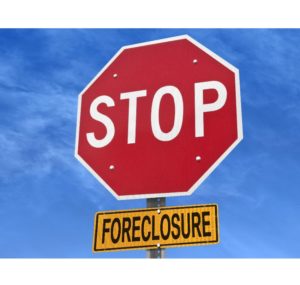Saving a Home from Foreclosure
May 20, 2022 | Foreclosure
Sometimes a homeowner faces a setback which causes them to fall behind on the mortgage payment. Since mortgage payments can range from several hundred to several thousand dollars per month (depending on the amount of the loan, term, and interest rate) falling a month behind may be easy to catch up on or it may be a daunting task.
Lenders typically provide borrowers with opportunities to get caught up. If the loan falls behind 60 days or more it may be time to consider applying for a loan modification. Loan modifications are paperwork-intensive AND time-sensitive. Loan modification applications are littered with strict requirements and are not always approved.
What happens when you exhaust the options that are available to you and then discover your home is in active foreclosure? What if a sale date is scheduled but you have the means to get caught up if ONLY your lender would provide you enough time to do so??
Chapter 13 Bankruptcy is also known as the “reorganization” bankruptcy. Chapter 13 bankruptcy cases offer a path to retaining a home if the missed payments can be “caught up” in a 60-month time frame.
Here is an example:
Your mortgage payments are $1,000/month. A bout of unemployment has caused you to fall five months behind. In order to come current on the loan you will need $5,000 plus whatever late fees, penalties, and legal costs the lender tacks on. To keep it easy let’s say you will need $6,000 total but without access to $6,000 right now, you need a plan to spread out the payments over time.
In addition to the mortgage loan let’s say you have a vehicle loan with a remaining balance of $6,000, plus some medical bills.
Finally, all Chapter 13 plans have administrative costs built in to pay out legal fees to your attorney and to your Trustee.
Based on the above you will need to submit a plan to the bankruptcy court that proposes:
- Starting next month, I will resume paying my regular $1,000/month mortgage payment directly to my lender.
- Starting next month, I will begin paying the Chapter 13 Trustee $300/month over the next 60 months for a total of $18,000.
- $6,000 (plus an estimated $500 of interest) will be for my mortgage loan to get caught up.
- $6,000 (plus an estimated $500 of interest) will pay off my vehicle loan in full.
- $1,000 will be available for my medical bills.
- The remaining $4,000 will be distributed toward the legal costs of the case (attorney and Trustee fees).
In this example, starting the month AFTER filing Chapter 13 the filer will resume paying $1,000 monthly mortgage payments directly to the lender, and $300 per month to the Trustee. If this is affordable, Chapter 13 is a good fit!
Chapter 13 does NOT provide an opportunity to make adjustments to your loan. Bankruptcy law does not allow a Chapter 13 plan to alter your monthly mortgage payments, interest rate, or the length of your term. The only path available to do so is to refinance your loan.
Chapter 13 is effective immediately. The moment you file a Chapter 13 case ALL activity of your creditors must cease. This includes a pending foreclosure. Even if a sale is scheduled the sale must be cancelled the moment you file a Chapter 13 case. The legal mechanism that stops all creditor activity is called the “automatic stay”. This is what provides you an opportunity to submit a plan to the Court and notify all of your creditors how you intend to reorganize your finances.
If you are facing foreclosure and considering your options you should consult an attorney immediately. You may have less time than you think to consider these important life choices.

Saving a Home from Foreclosure

